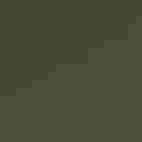Scaled Quail
At a Glance
Dry southwestern grasslands provide a home for this blue-gray quail. Coveys of Scaled Quail travel about on foot; even when disturbed, they tend to run rather than flying. In the concealing cover of the short grass they can be inconspicuous except in spring, when males often call from atop fenceposts or exposed rocks. At night, coveys of Scaled Quail roost on the ground in dense low growth.
All bird guide text and rangemaps adapted from Lives of North American Birds by Kenn Kaufman© 1996, used by permission of Houghton Mifflin Harcourt Publishing Company. All rights reserved.
Category
Pheasants and Grouse, Upland Ground Birds
IUCN Status
Least Concern
Habitat
Arroyos and Canyons, Desert and Arid Habitats, Fields, Meadows, and Grasslands, Shrublands, Savannas, and Thickets
Region
Plains, Rocky Mountains, Southwest, Texas
Behavior
Flushes, Running
Population
5.100.000
Range & Identification
Migration & Range Maps
Permanent resident throughout its range.
Description
10-12" (25-30 cm). Blue-gray overall, with fluffy white crest ("cottontop" is one nickname). Dark edges on gray body feathers create scaled look. Sexes very similar, but female may have shorter crest.
Size
About the size of a Crow, About the size of a Robin
Color
Blue, Brown, Gray, Tan, White
Wing Shape
Fingered, Rounded, Short
Tail Shape
Rounded, Short, Square-tipped
Songs and Calls
Call is a low nasal pe-cos. Also harsh clucking calls.
Call Pattern
Flat, Undulating
Call Type
Scream
Habitat
Grasslands, brush, arid country. Prime habitat is flat open country or rolling hills, supporting a mix of grasses with annual weeds, with scattered shrubs for additional cover and shade. Also found where grassland grades into other open habitat types such as desert, juniper slopes, dry brush.
Sign up for Audubon's newsletter to learn more about birds like the Scaled Quail
Behavior
Eggs
Usually about 12, sometimes 5-16 or more. Whitish, speckled with light brown. Incubation is mostly by female, rarely by male, about 22-23 days.
Young
Leave nest shortly after hatching. Both parents tend young, with male often standing guard on higher perch while female and young feed on the ground. Young feed themselves. Development of young and age at first flight not well known. One brood per year, rarely two.
Feeding Behavior
Forages in coveys at most seasons, in pairs or singly during early part of breeding season.
Diet
Seeds, insects. Eats seeds of many annual and perennial weeds (such as snakeweed, Russian thistle, broomweed), seeds of woody plants (such as mesquite); seems to eat relatively few grass seeds, but perhaps more than some quail. Also feeds on green leaves, berries. Eats more insects than most quail, especially in spring and summer.
Nesting
In breeding season, unmated males perch on tops of shrubs, rocks, or posts, and give hoarse single-noted call to defend territory and attract females. Nest site is on ground, usually well hidden under shrub, tumbleweed, cactus, or other cover. Nest (probably built by female) is shallow depression lined with grass and leaves, with tuft of standing grass arched over it.
Conservation
Conservation Status
Local populations rise and fall. Reproduction may be poor in dry years. Moderate grazing may improve habitat for this species, but overgrazing degrades habitat.
Climate Threats Facing the Scaled Quail
Choose a temperature scenario below to see which threats will affect this species as warming increases. The same climate change-driven threats that put birds at risk will affect other wildlife and people, too.




